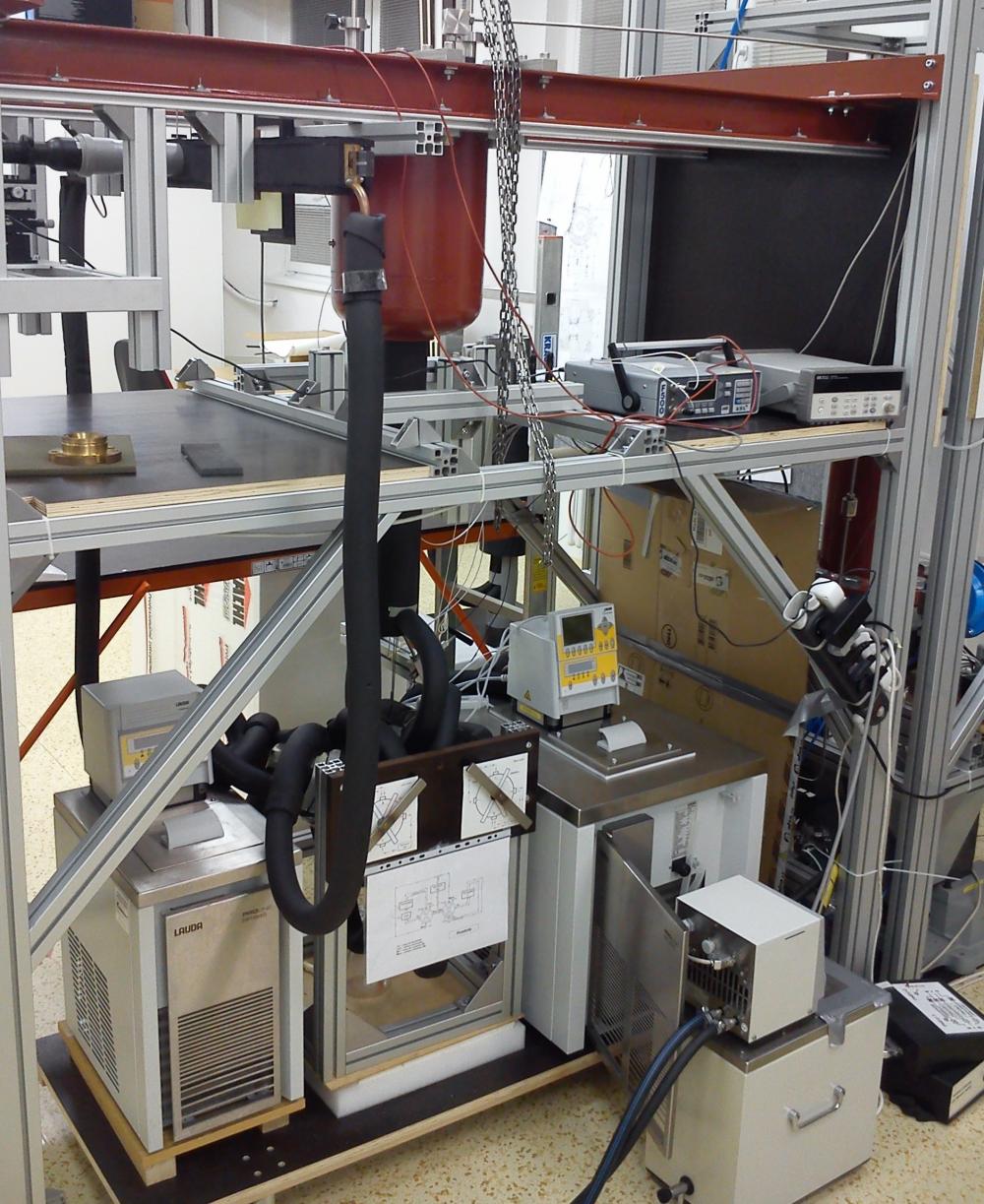Density apparatus is designed for measurement of density of supercooled aqueous liquids, e.g., supercooled ultrapure water, sea water, or heavy water (D2O), at a constant pressure. The apparatus allows measuring isothermal compressibility for pressures up to 200 MPa (1974 atmospheres) and temperatures down to – 40 °C. Main goal of the experiment is to clarify and describe the anomalies of supercooled water at low temperatures and high pressures.
 |
 |
| a) | b) |
Density of supercooled water is determined from the comparative measurement inside two fused silica capillary tubes with constant inner diameters of about 0.3 mm. Upper parts of the vertical capillary tubes are installed inside a stainless steel (SS) high-pressure cell equipped with a set of sapphire windows allowing observation of the capillary tubes by an objective and a digital camera. The high-pressure optical cell is kept at a constant temperature close to ambient.

Lower parts of the capillary tubes are placed inside a protective SS tube filled with a low-freezing heat transfer (ionic) liquid. The pressure inside the optical cell and the protective tube is induced by a gaseous nitrogen pressurized by a high-pressure compressor. A mercury plug long a few millimeters is used to separate the water sample from nitrogen to prevent its dissolution and bubble formation upon pressure reduction.

The lower ends of the capillary tubes are located within the heat exchanger where the density of the liquid sample changes due to the varying temperature. The heat exchanger is alternatively connected to a cooling circulation thermostat delivering ethanol at desired temperature (e.g., – 15 °C) and to another circulation thermostat providing ethanol at a reference temperature (e.g., + 20 °C). The heat exchanger has a low thermal capacity allowing that the temperature stabilizes to about ± 0.02 °C in several minutes. The advantage of using two capillaries, one long and the other short, is that the effect of temperature transition zone is eliminated by taking the difference of heights of liquid columns in both capillary tubes.
© 2008–2014 Institute of Thermomechanics ASCR, v. v. i.